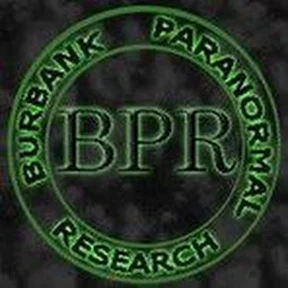Automated scripts and tools related to Burbank Paranormal Research IT workflows and processes.
BPR uses Linux (currently Ubuntu 22.04 LTS) as the underlying OS for all of its hosted virtual machines.
All shell scripts (files ending in .sh) are written in Bash and need to be marked with the executable (+x) bit before they are runnable.
The machines that BPR runs are hosted through a VPS (Virtual Private Server) provider to enable more complete control over machine behavior and environment.
Some VPS providers:
- Linode - Dedicated / Shared
- Digital Ocean - Droplets
- Amazon Web Services (AWS) - EC2 Instances
- Google Cloud Platform (GCP) - Compute Engine
- ...and many more
The main server is provisioned with the provisioning/ubuntu/main-server.sh script. This will create and configure the Common, Web, and Database environments.
The environment-specific provisioning scripts live within the provisioning/ubuntu/environments directory.
Script: common.sh
The Common Environment provides the base dependencies and configuration for all other environments.
This is the first script that should be run before a specific environment is provisionined.
The provisioning script installs the following packages via apt-get:
- Development / Building:
build-essential - OpenSSH:
openssh-client,openssh-server - Network Tools:
net-tools,wget - OpenSSL:
libssl-dev - Archiving:
zip
NOTE: the build-essential package is what includes git, perl, make, etc. as part of its dpkg-dev dependency.
The script performs the following configuration operations:
- Adds a non-root administrative user with
sudocapabilities - Allows the new non-root user to access the machine via SSH
- Removes the password from and locks the
rootaccount - Disables
rootlogin over SSH - Disables password-based login over SSH (for our purposes, we only want to use key-based auth)
The following TCP ports are bound (i.e. there is something listening on them):
- SSH:
22
Script: web.sh
The Web Environment provides everything related to processing and serving data both internally (to our staff and clients) and externally (to the public) over the web.
All of the BPR websites, web applications, and data that anyone accesses are served within this environment.
The PHP-based applications are served through Nginx using php-fpm with a Unix socket to process the PHP code.
The provisioning script installs the following packages via snap:
NOTE: certbot is used to enable HTTPS in production through Let's Encrypt; openssl is used to enable HTTPS in the development environment(s).
The provisioning script installs the following packages via apt-get:
The provisioning script installs the following packages via php:
- Composer: PHP package manager
The provisioning script installs the following tools via bash:
- Node Version Manager (NVM): version manager for NodeJS
The provisioning script installs the following tools via nvm:
- Most-current stable release of NodeJS
The provisioning script installs the following packages via npm:
- Yarn: NodeJS package manager replacement for NPM
Finally, the script performs the following configuration operations:
- Adds a non-admin web user and group named
www - Changes the process user for Nginx to be the new web user
- Changes the ownership information for Nginx logs, web data, document roots, etc. to the new web user with
chown - Changes the user for the
php-fpmprocess pool to be the new web user - Configures Redis to be managed and monitored under
systemdsosystemctlcan be used
The following TCP ports are bound (i.e. there is something listening on them):
- HTTP:
80 - HTTPS:
443 - Redis:
6379(localhost-only bind to prevent remote connections)
Script: db.sh
The Database Environment provides everything related to the structure, storage, retrieval, and manipulation of data within the BPR databases.
BPR uses MariaDB instead of MySQL (as a drop-in replacement) for its relational (RDBMS) data.
The provisioning script installs the following packages via apt-get:
- MariaDB:
mariadb-server
The script also informs the user that they need to perform a secure MySQL installation manually with sudo mysql_secure_installation.
We perform the following configuration actions when prompted during the secure installation:
- Allow standard logins for
root(i.e. DO NOT switch tounix_socketauthentication) - Set an actual password for
root- This ensures that merely having access to the underlying OS
rootaccount does not also grant passwordless access to the MariaDBrootaccount
- This ensures that merely having access to the underlying OS
- Remove anonymous users
- Remove the
testdatabase - Disable remote logins for
rootso it islocalhost-only via itsGRANTclause - Reload the privilege tables
Similarly to what we do during the common environment provisioning regarding adding an OS non-root admin user, we will add a non-root DB admin:
- Authenticate into MariaDB (entering your new
rootDB password when prompted):mysql -u root -p - Execute the following statements to create a
localhost-only administrative account that can control everything (and also create additional accounts and grant privileges):
# replace [ADMIN_USERNAME] with the user account name to create and replace
# [ADMIN_PASSWORD] with the password to assign to the new account
CREATE USER '[ADMIN_USERNAME]'@localhost IDENTIFIED BY '[ADMIN_PASSWORD]';
GRANT ALL PRIVILEGES ON *.* TO '[ADMIN_USERNAME]'@localhost WITH GRANT OPTION;
For example, to create a new db_admin user with the password adminpw we would execute the following statements:
CREATE USER 'db_admin'@localhost IDENTIFIED BY 'adminpw';
GRANT ALL PRIVILEGES ON *.* TO 'db_admin'@localhost WITH GRANT OPTION;
- Execute the following statement to flush the privilege tables and activate the new account:
FLUSH PRIVILEGES;
- Disconnect from the MariaDB instance via the
mysqlCLI:exit;
The following TCP ports are bound (i.e. there is something listening on them):
- MariaDB (MySQL):
3306
BPR uses Nginx to serve both its static and dynamic resources.
Everything for Nginx can be found in the nginx directory.
Script: site-control.sh
